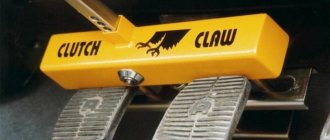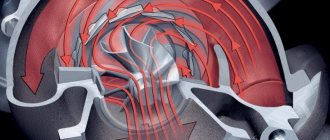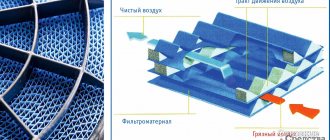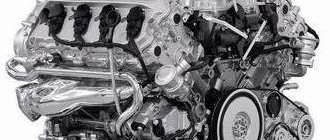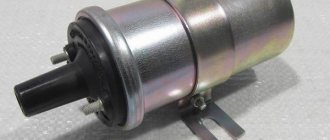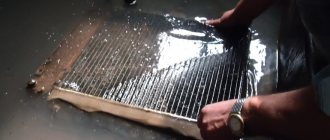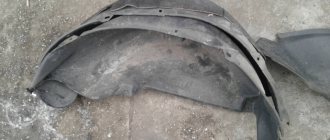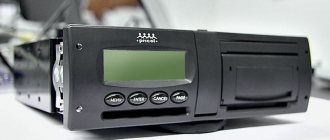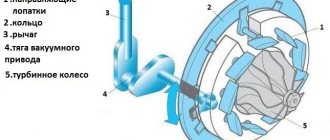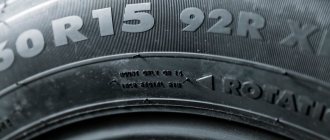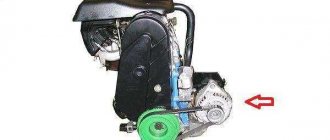SEALING
SOLID TIRES with superelastic filler (solid tires, filled tires, rubber tires, solid rubber tires) resemble a three-layer cake in their design.
The outer layer is an elastic tread, the intermediate layer is designed to absorb shock and dissipate heat, and the inner layer, reinforced with steel cord, serves to secure the tire to the wheel rim. They received the name “superelastic” due to the modern materials used in their production, which bring their elasticity parameters closer to those of pneumatic tires. One of these materials is “vulkalan”, which has the same elasticity as rubber, but is close to plastic in hardness. In addition, “Vulkalan” is resistant to aggressive chemical compounds and acids. Super-elastic tires are characterized by amazing durability; they retain their performance for years and require replacement only after complete wear. Typically, such tires are used in metalworking industries with an abundance of metal shavings, construction sites, and chemical warehouses. BANDAGE TIRES equipped with a thin shock-absorbing layer of natural rubber are designed to work in particularly aggressive environments. The tread in this design is attached to a steel band that secures the tire to the rim. This type of tire is the least common today. The cost of such tires is very high, in addition, experts call this technology morally and physically obsolete. Among other things, the popularity of pneumatic and solid tires is facilitated by their interchangeability, since both of these types of rubber are mounted on standard rims. Regardless of the type of tire, they may have different tread, i.e. the outer layer in contact with the road surface. Depending on the operating conditions of the loaders, they are equipped with tires with smooth or figured tread. The abrasive qualities, cross-country ability and coefficient of adhesion to the road will be different.
TUBE TIRES (English: Tube Type or TT) - a type of tire where a tube acts as a sealing layer, the first prototype was patented by Robert William Thomson in 1846, and the first model for cars invented by the Michelin brothers appeared in 1895, since then in design features nothing else has changed, they will soon remain only an echo of the past, the vast majority of modern cars and trucks are equipped with tubeless tires.
TUBE TIRE DEVICE
- Tire - outer part;
- Chamber with valve, sealed internal circuit;
The tube is inserted into the tire, and the structure is put on the disk. Because of this structure, the tire of a tube tire does not fit particularly tightly to the disk, and the main burden of maintaining pressure in the tire falls on the tube.
In turn, the tube does not have great mechanical strength, and therefore needs protection from external influences, punctures and impacts, which is what the tire provides.
PROS AND CONS OF TUBE TIRES
Advantages:
- Tube tires are more affordable than tubeless tires;
- In case of lateral damage, it is enough to replace only the punctured tube, and not the entire tire;
- Tube tires do not require special rims and can fit on any tire;
Flaws:
- A tube tire is much heavier than a tubeless tire;
- A punctured tube tire will deflate almost instantly and require replacement right on the road; you won’t be able to get to a service station on it;
- There is a high probability of an internal puncture of the camera due to worn cord threads, as well as trapped debris;
- Repairing even small punctures requires disassembling the wheel;
TUBELESS TIRES (English: Tubeless tire or TL) - a type of tire in which there is no tube, and the tire bead is hermetically adjacent to the wheel rim. In 1903, Paul Litchfield, an engineer and chairman of the board, developed and patented the world's first tubeless tire, which was presented at several exhibitions.[1] However, his invention in those years was considered unreliable and unsafe. Later, patents for tubeless tires were received by Killen Tire (Great Britain, 1930), Wingfoot Corporation (South Africa, 1944), and BFGoodrich (USA, 1952). But it was not until 1954 that a series of Packard cars equipped with tubeless tires rolled off the production line.
TUBELESS TIRE DEVICE
- Tire with a sealing layer (Tire and tube in the singular);
- The design of a tubeless tire is such that it does not have a separate tube; its role is played by an internal sealing layer a couple of millimeters thick, which is “welded” to the tire from the inside during the vulcanization stage. This elastic layer, made from a mixture of synthetic and natural rubbers, holds compressed air well and at the same time fits tightly to the rim - which is why the tubeless tire device does not require any additional internal contours; it is put directly on the rim. The inner sealing layer also helps with punctures: if a small sharp object (a piece of wire, a nail, etc.) is stuck into the tire, it will get stuck in the inner layer and will not fall out, preventing air leakage through the puncture;
- The design of a tubeless tire, by the way, requires a more complex rim. In particular, such a disk has special humps - annular protrusions on the rim landing flanges, with the help of which tubeless tires are securely fixed. The beads of tubeless tires are sealed with an additional rubber layer, which ensures a tight seal where the tire sits on the rim;
PROS AND CONS OF TUBELESS TIRES
Advantages:
- Slow depressurization and the ability to maintain normal pressure for a long time after a puncture, which increases traffic safety and allows you to drive a punctured tire to the repair site;
- A tubeless tire is much lighter than a tube tire, which reduces the load on the car’s suspension;
- Tubeless tires have greater durability because they are less susceptible to overheating, have stable internal pressure, and do not suffer from friction between the tube and the tire;
- Driving comfort on a tubeless tire is much higher because its sidewall is softer;
- Fuel economy;
Flaws:
- Installation and major repairs of tubeless tires require complex manipulations that can only be performed by a specialist using the necessary equipment; independent repair and installation of tires is impossible;
- Damage or deformation of the wheel rim at the junction with the tire bead will lead to depressurization and flattening of the wheel;
- Driving on a flat tubeless tire can destroy both the sealing layer and the tire as a whole.
USING TUBERLED AND TUBELLESS TIRES
Tubeless tires are now used on all passenger cars and are confidently winning the market in the light-duty and cargo segments. Tires with tubes are still installed on bicycle and motorcycle equipment, where they use spoked wheels, which, as a rule, do not hold a tubeless tire with the required tightness. Tube tires are also popular among “old believers”, for whom the main advantage is the ability to replace a punctured tube without replacing the tire, as well as the ease of repairing the tube with your own hands.
INSTALLATION FEATURES OF TUBELESS AND TUBELESS TIRES
- In a tube tire, in order to avoid the formation of folds and rubbing of the tube, the size of the tube must correspond to the size of the tire.
- During installation, debris should not be allowed to enter the tube tire, between the tire and the tube, as this will lead to abrasion of the tube;
- Installing tubes in a tubeless tire is not advisable and may even be dangerous, despite the damage. An air cushion forms between the tube and the sealing layer in a tubeless tire, which can lead to damage to the tire, especially when the load on the wheel sharply increases when cornering and when braking;
HOW TO DISTINGUISH A CHAMBER TIRE FROM A TUBELESS TIRE?
Marking:
- TT – marking of tube tires, abbreviation for Tube Type – “tube type”;
- TL or single T - marking of a tubeless tire, from Tubeless - “without a tube”;
By nipple:
- On a tube tire, the nipple is long and smooth; if you lower the wheel and apply pressure, the nipple may fall inside the tire;
- On a tubeless tire - the nipple is short with a small bead, rigidly attached to the surface of the disk;
CONCLUSION TUBELESS TIRES
- Modernity;
- Safety;
- Reliability;
- Comfort;
- Cost-effective;
Tire pressure gauges
Now you can easily choose a pressure gauge to suit your taste. Historically, the first pressure gauge was analog. This device has an analogue scale and pointer. The principle of operation is very simple. The air, acting on the membrane, pushes the arrow through a system of levers. In addition to the analogue one, you can use a digital pressure gauge. However, it has a drawback - the presence of batteries that need to be changed on time.
There are caps - pressure indicators. The principle of operation is that the color of the cap changes to red if the pressure differs from the required level.
If you know exactly the nominal tire pressure (caps are sold for a certain pressure), then you can install them on each wheel, and you will visually see whether it needs inflation. The disadvantage is that the pressure gauge can simply be twisted, and it does not show accurate pressure. It follows that the most reliable pressure gauge is analog.
DESIGN
DIAGONAL - cord threads consist of polymer materials, in the frame and belt and are located at an angle of 35-40 degrees in the diagonal direction from rim to rim, in several even layers (2, 4, 6, 8, etc.), such placement of threads The cord provides optimal load distribution, which makes impacts easier.
ADVANTAGES
- The simple design of such tires seriously reduces the cost;
- The side part has high strength;
- A diagonal tire actively absorbs the loads that occur when a wheel falls into a hole;
- Good maintainability.
1. Sealing layer for tubeless tires; 2. Side part; 3. Frame layers; 4. Protector; 5. Location of cord threads;
RADIAL - cord threads can be either in a combined version and consist of polymer materials and steel in areas that are in the contact patch with the road surface, or in all-metal (solid metal) and located at an angle of 90°.
The breaker is a thin steel cable coated with brass, a cable with a diameter of 0.15 - 0.25 mm, consisting of two or three high-strength layers, with increased ability to conduct heat and resist thermal aging.
The frame consists of one radial layer.
All parts of the tire, the tread and the sidewall, work independently, so the sidewall deflection is not transferred to the tread.
ADVANTAGES
- Long service life;
- Low rolling resistance;
- Fewer breaker layers contribute to:
- Good removal of thermal energy;
- Less heating;
- Better handling in any weather;
- Less weight reduces:
- Fuel consumption;
- Load nodes;
1. Sealing layer for tubeless tires; 2. Side part; 3. Frame; 4. Protector; 5. Breaker layers;
FRAMEWORK
TEXTILE or COMBINED tires are tires with a textile frame consisting of five or more layers of rubberized nylon or nylon cord and a breaker made of metal threads. The combination of a carcass with a meridional arrangement of cord threads and a belt in radial tires increases performance characteristics in comparison with diagonal tires. Michelin was the first to use metal cord in the carcass of radial textile tires back in the late 40s of the last century, which significantly improved performance characteristics due to its high tensile rigidity, endurance and thermal conductivity.
However, even in those years, the truck combined radial tire with a textile frame ceased to meet the growing demands of motorists for reliability, safety and maximum speed, especially in conditions of long-term non-stop driving.
CMK or ALL STEEL – all-metal cord tires are tires in which the frame consists entirely of steel threads, without the use of textile materials;
- Thanks to the “all-metal cord” design, these tires received higher performance qualities, as well as the possibility of repeated tread renovation, by “cutting” or “welding”.
- Additional components are added to the rubber mixture of such tires, which provide the possibility of long-term non-stop operation of the vehicle, which is also important for freight transportation. These components reduce overheating of the tire while driving.
- The downside of this technology is that the cost of solid metal tires is higher than that of tires made using classical technology. This is because solid steel tires are more difficult to manufacture. But this difference is compensated by a longer service life, fuel economy, load capacity and other advantages.
- If the mileage of a conventional “combined” tire rarely exceeds 100,000 km, then an all-metal tire, depending on the technological features, brand and cost of the tire, can travel more than 500,000 km.
- In developed countries, solid steel tires have been produced since the early 80s of the last century and have gained popularity due to their undeniable advantages in comparison with combined tires;
- In Russia, to this day, many manufacturers equip their vehicles with combined tires, this is due to the effect of old standards for packaging, and the fact that automakers, first of all, produce cars, and it is important for them to make the final product as cheap as possible, and the interests of the consumer fade into the background .
- By moving away from using “combined tires”, in favor of all-in-one tubeless tires, the consumer receives:
UNCONDIBLE ADVANTAGES
- Modernity;
- Metal carcass;
- Increased mileage;
- Increased mileage from 180,000 km;
- Increased load capacity;
- Fuel savings by 15%;
- Pressure stability;
- Reduced deformation;
- Better self-cleaning properties of the tread;
- Reduced rolling resistance;
- Reduced heat generation;
- High speed resistance;
- Possibility before cutting the tread;
- Possibility of retreading;
Operating principle of a tubeless tire
The first tires created using UST (Universal System Tubeless) technology entered the market back in 1999. The UST marking itself denotes a system consisting of two components - a rim and a tire. Reliable and airtight fixation of the tire on the rim is achieved by matching special protrusions placed on the walls of these two components.
Today there is a fairly large selection of tubeless tires on the market, although their price is quite high.
TERMINOLOGY
- The tread provides traction and wear resistance while also protecting the tire components underneath it;
- The breaker consists of several layers of steel or other cord. It provides tire strength, stabilizes the carcass and prevents foreign objects from penetrating into the tire structure;
- The sidewall provides protection to the side of the frame, withstands deformation and exposure to atmospheric conditions;
- The tire frame absorbs the entire load, including braking and acceleration, provides controllability, and withstands various forces acting on the tire during its operation.
- The frame of a truck tire is usually single-ply and reinforced with steel cables;
- The inner sealing layer in tubeless tires has a special composition that prevents pressure loss;
- The bead ring consists of a bundle of specially shaped wire. It ensures a secure fit and seal of the tire on the rim, locking it in this position;
- The filler of the bead and the lower part of the sidewall is designed to uniformly transfer forces from the bead to the sidewall;
- Chipper: A layer of rubber reinforced with steel cables over the bend of the radial cord layer serves to strengthen and stabilize the transition area between the bead and the sidewall;
- Chafer: A layer of durable rubberized fabric that protects the bead area and that counteracts erosion in the tire bead area caused by the action of the rim;
- The chamber* is designed to prevent air loss. The tube is used in tube-type tires;
- Rim Tape (Flap)*: Rubber strip placed between the tube and the rim; Protects the camera from wear and prevents the rim from damaging the camera;
